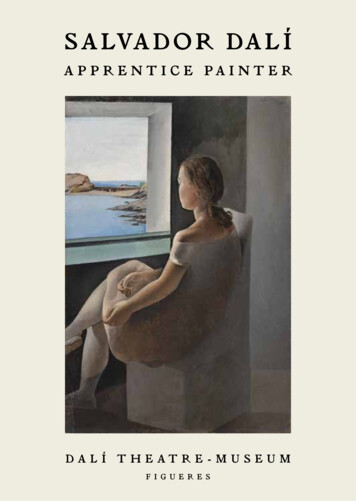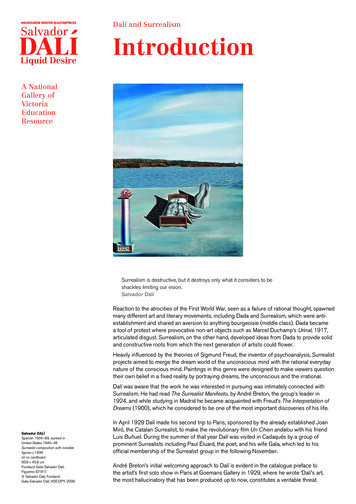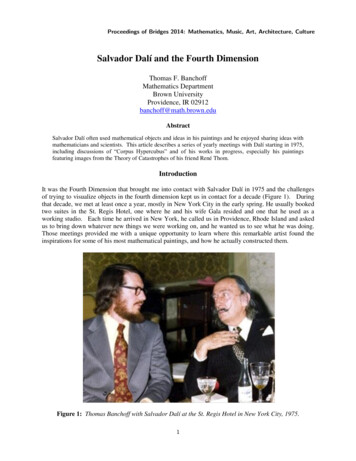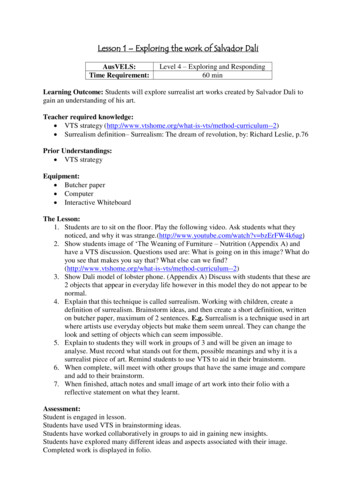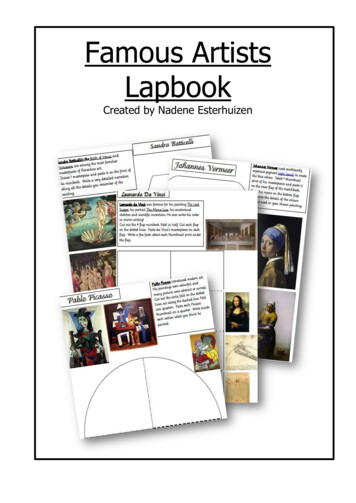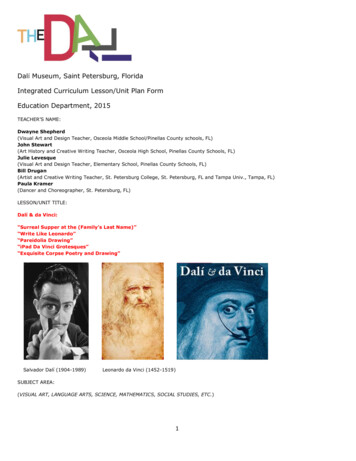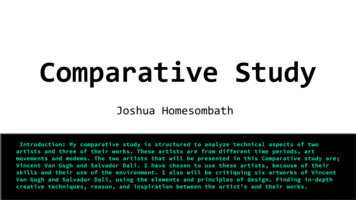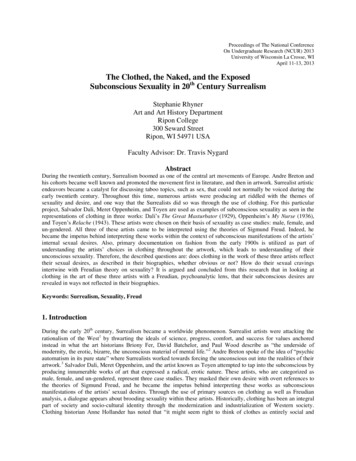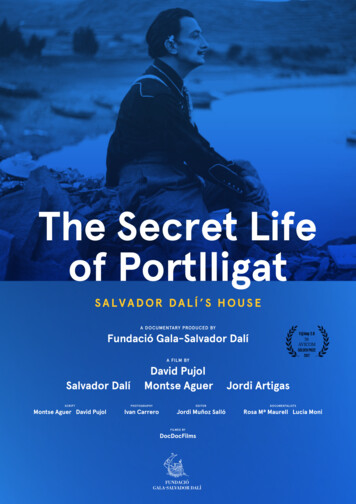
Transcription
The house that Salvador Dalí built, the only lasting home andstudio he ever had, provides a narrative thread for the story ofhis life and work, a biography and a creative oeuvre that spanthe greater part of the twentieth century. This documentarysheds new light on the painter’s intimate and abidingconnection with the landscape of Cadaqués, Portlligat and Capde Creus, a landscape in which he immersed himself, and onethat shaped and determined him. At the same time it exploreslesser-known aspects of his personal life, in particular therelationships with his father and his sister – and first model –Anna Maria: relationships that in turn help us to understandkey elements of his work. To know the house-cum-studio atPortlligat is to deeply understand Salvador Dalí.
The Secret Life of Portlligat by the writersMontse Aguer, Director of the Dalí MuseumsThe three Dalí sites – the Dalí Theatre-Museum in Figueres, thehouse at Portlligat, and Púbol Castle, which make up the Dalitriangle – propose to take us on a trip through the life and workof Salvador Dalí, a journey presented in three documentaries,in which the protagonists of story are Dalí himself and a wealthof previously little-known or even unknown documentation andinformation.With the documentary about the Portlligat house, the secondpart of our trilogy*, our aim is to make better known the only realhome and studio that Salvador Dalí ever had. This house-cumstudio was the refuge of the artist and Gala, at the very heart ofthe only landscape in which it truly belonged: that of Portlligat,Cadaqués and Cap de Creus. A landscape that conditioned andstimulated the painter, I would even dare to say it gave him hisidentity. Dalí identified with it completely.David Pujol, director and scriptwriterThe Dalí universe represents a great challenge, and this film was also faced with the added challenge of bearingwitness to a landscape, a wild and constantly changing landscape with a great personality, which shies away from,but which it was very important to capture. Montse Aguer made very clear to me, as we were writing the scripttogether, the importance of the symbiosis between the landscape of Cap de Creus and the universe of Salvador Dalí,not only in artistic terms but also on a mystical level, because – as is well known – Dalí always turned for physicaland spiritual shelter to this special corner of the world.The house, every inch of which is studio, is the key tounderstanding Dalí’s cosmogony. This is where he experimented,and also the sacred place where he practised every day,obsessively, the ceremony of the art. Art: Dalí’s vital choice, andhis passion.I wanted to show Dalí in his studio. The painter in his sanctum sanctorum. The man in his habitat. And Gala. And abiography: full, as all biographies are, of nuances and radical breaks. From family ruptures to ruptures as bloody anddevastating as wars. I wanted to capture the constant to-and-fro between everyday life and exile, between interiorand exterior, between intimacy and extraversion.When you visit the house there is a strange feeling that he is present all the while: Dalí still lives there, heaccompanies you through the studio, the patios, the gardens and the narrow corridors that surround the house you sense Dalí’s presence because his ideas are so powerful, so magical. I have tried to convey this presence in thedocumentary, combining archive footage of Dalí wandering around the house with images we have shot to create analmost esoteric feeling, to enable the viewers to really understand that if they decide to visit the only house SalvadorDalí ever owned, he will be there to receive them and act as their host.* The first documentary, produced in 2015, is entitled Dalí’s Last Masterpiece
My painting cannotbe understoodwithout firstgetting to knowPortlligat.Salvador Dalí
PurposeFollowing on from the documentaryDalí’s Last Masterpiece, which tookus inside the enigmas of the artist’slast great work, his Theatre-Museumin Figueres, this second part of thetrilogy invites us to discover Dalí’slife and work in relation to his houseat Portlligat, the only studio of hisown he ever had, and its exceptionalsetting in a landscape that inspiredand influenced him profoundly.Here again it is Salvador Dalí himselfwho guides us on this journey into avery particular geography. This filmis aimed at all audiences, from thegeneral public to those who want todelve more deeply into little-knownaspects of the artist’s life.
I am not theman who stolea landscape,the landscapestole me.Salvador Dalí
www.salvador-dali.orgContactCoordinator Centre for Dalinian Studies:Lucia MoniPhone N. (0034) 972 677 514Pujada del Castell, 2817600 Figuereslucia.moni@fundaciodali.orgPress Office:Imma ParadaPhone N. (0034) 972 677 518Pujada del Castell,2817600 reta-de-portlligat-la-casa-de-salvador-daliRicardo Sans Condeminas Fundació Gala-Salvador Dalí, Figueres, 2017 / Melitó Casals “Meli/Fundació Gala-Salvador Dalí, Figueres, 2017. Francesc Català-Roca/Fundació Gala-Salvador Dalí, Figueres, 2017 / Image Rights of Salvador Dalí reserved. Fundació Gala-Salvador Dalí, Figueres, 2017.
house at Portlligat, and Púbol Castle, which make up the Dali triangle – propose to take us on a trip through the life and work of Salvador Dalí, a journey presented in three documentaries, in which the protagonists of story are Dalí himself and a wealth of previously li

